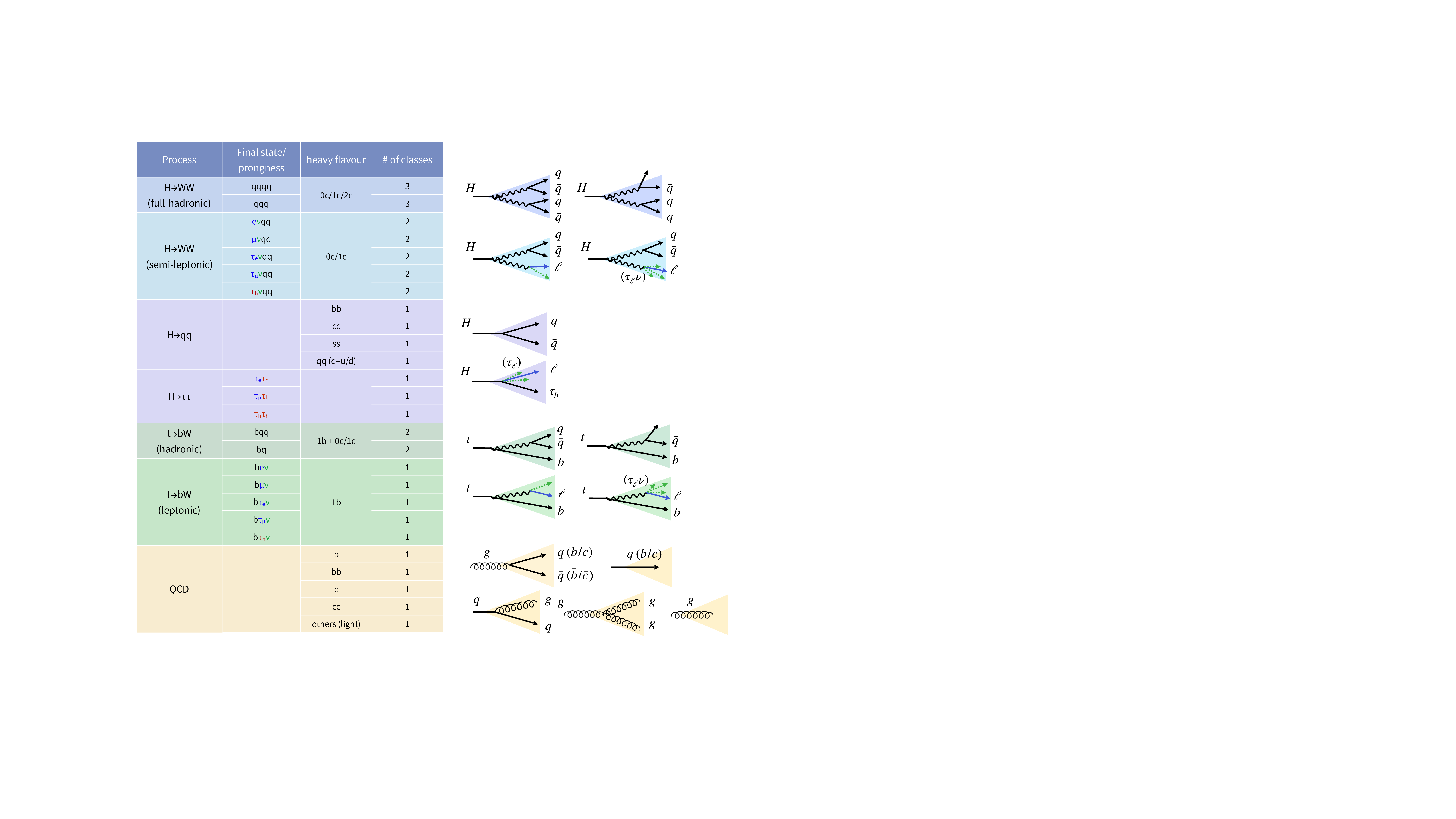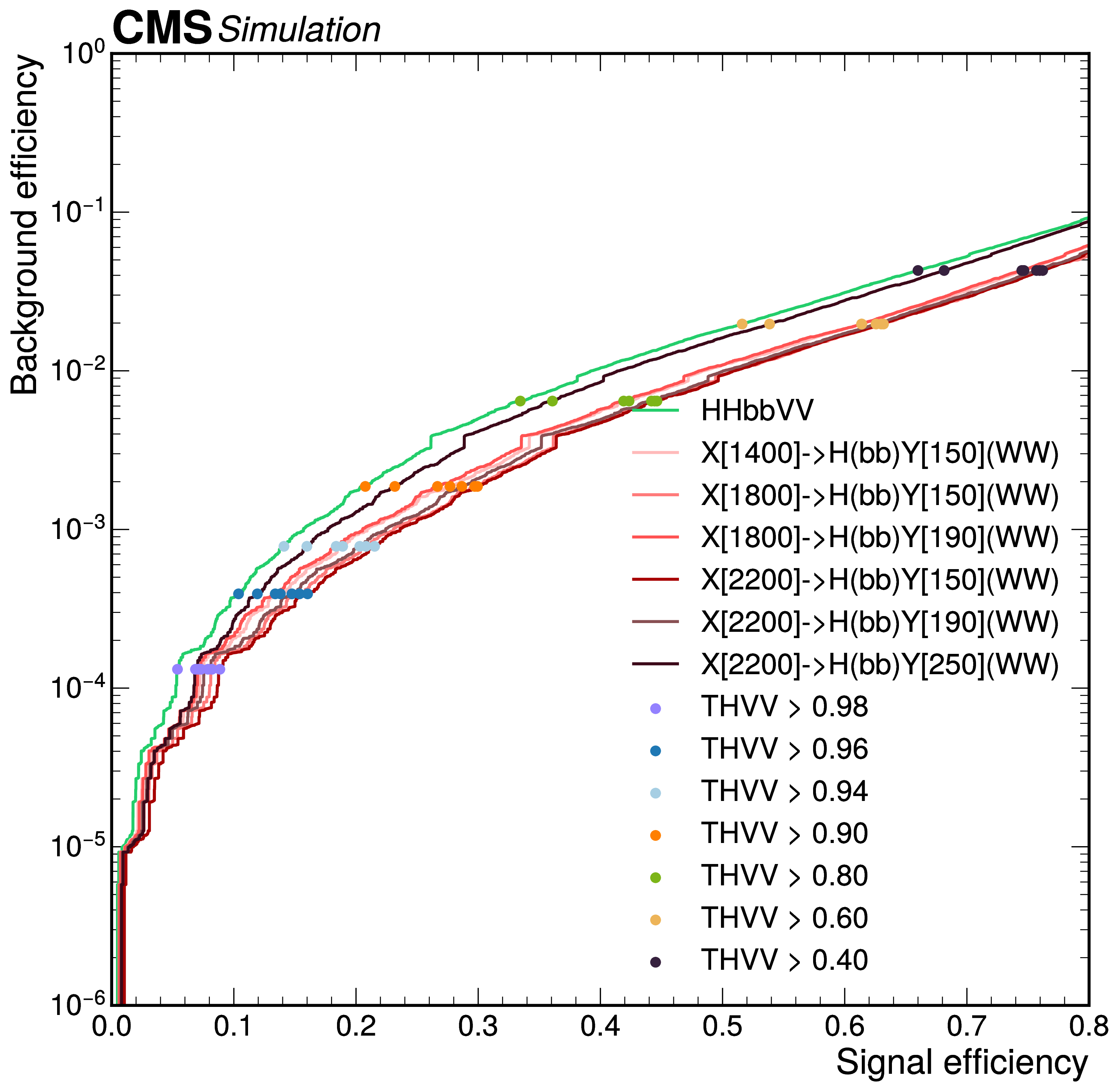


13.2 GloParT for classification
To target the jets, as well as several additional signatures, we introduce a new transformer-based model, based on the ParT [391] architecture, called “Global Particle Transformer” (GloParT). It is trained to classify between background QCD jets and a wide variety of fully hadronic and semi-leptonic Higgs and top quark processes. The full set of training classes is illustrated in Figure 13.2. As for the ParticleNet tagger, to achieve mass-decorrelation, the masses of Higgs- and top-quark-like resonances are varied in the training samples; specifically, Higgs-like topologies are simulated using spin-0 particles (G) decaying to and top-quark-like topologies with G decaying to , where the H and t masses are varied between 15 and 250. For decays, the W and Z boson masses are also varied, either linearly with the H mass—for SM Higgs boson searches such as the nonresonant search, or independently, motivated by BSM scenarios such as the resonant search.
The final states for each process are grouped by the number of quarks and leptons per jet, and then further separated by heavy flavors. Notably, fully hadronic jets are separated into 4- and 3-pronged jets (qqqq and qqq), to account for boosted jets which may not capture all four daughter quarks. The inputs to the model are AK8 jets with up to 128 PF candidates and 7 secondary vertices, with features listed in Table 13.1, and the outputs are the probabilities of the jet to have originated from each of the aforementioned processes and final states.
In the resonant analysis (and to evaluate the performance of the tagger for nonresonant signals), we focus on discriminating between the hadronic final states and top quark and QCD multijet backgrounds using the discriminator defined as
|
| (13.2.1) |
where , , , and are the sum of the predicted probabilities of their respective sub-categories. The performance of this discriminant on -candidate jets passing loose a preselection for boosted jets is shown in Figure 13.3. In the nonresonant analysis, the raw , , , and are used as inputs to the BDT.

